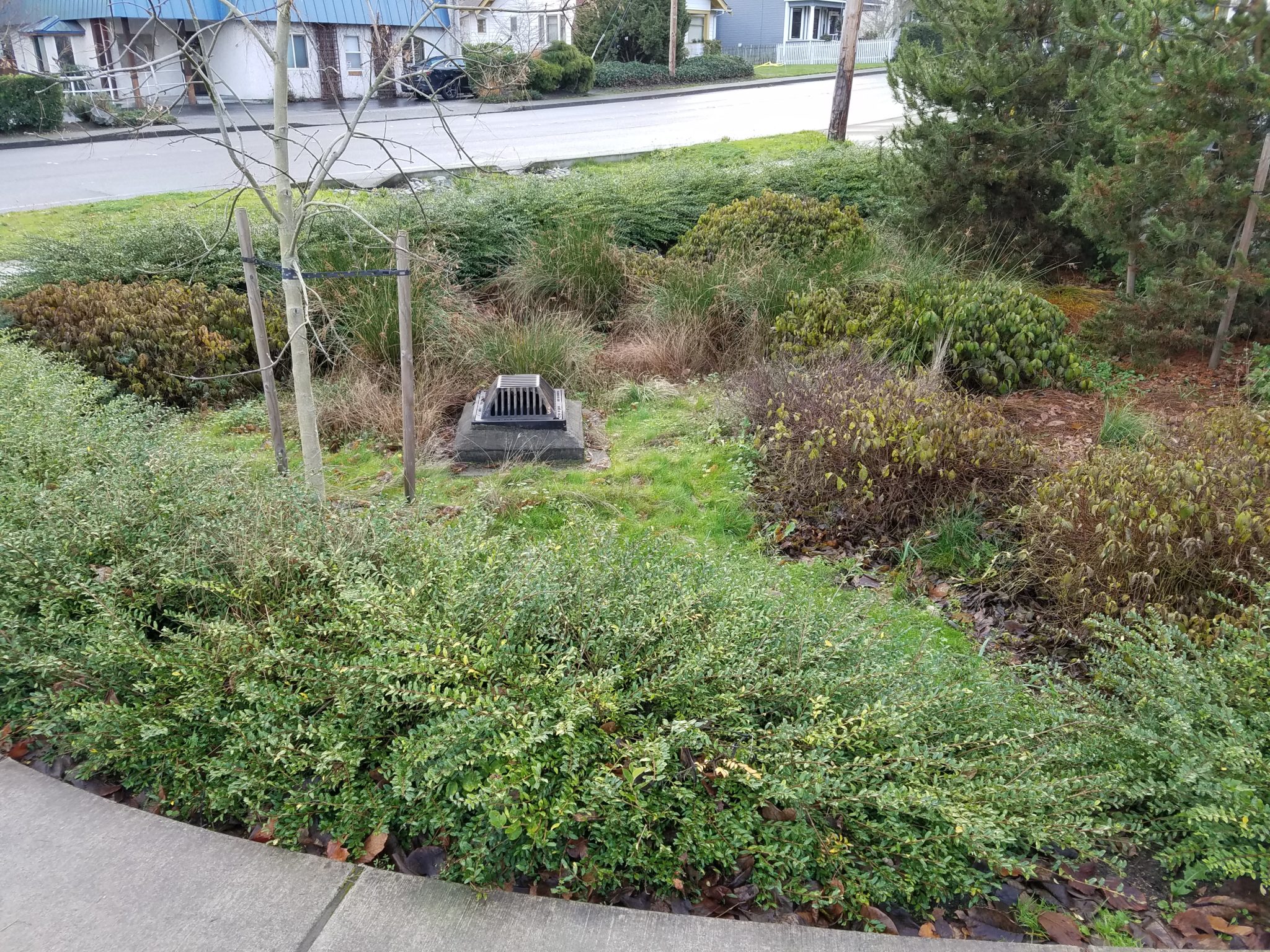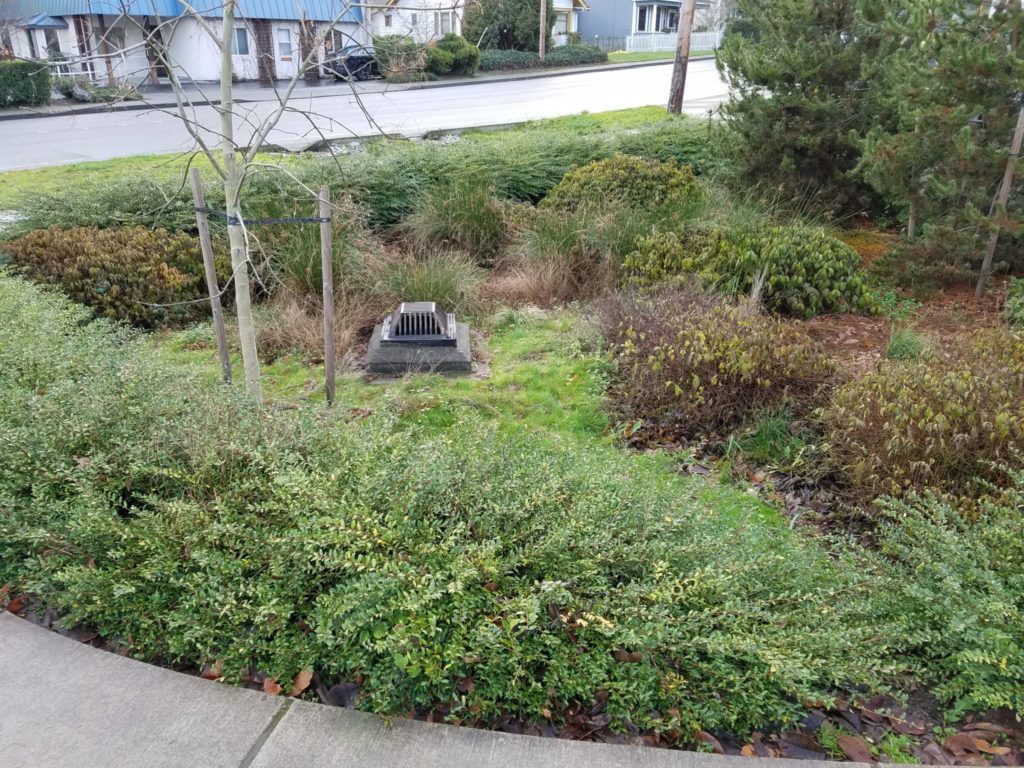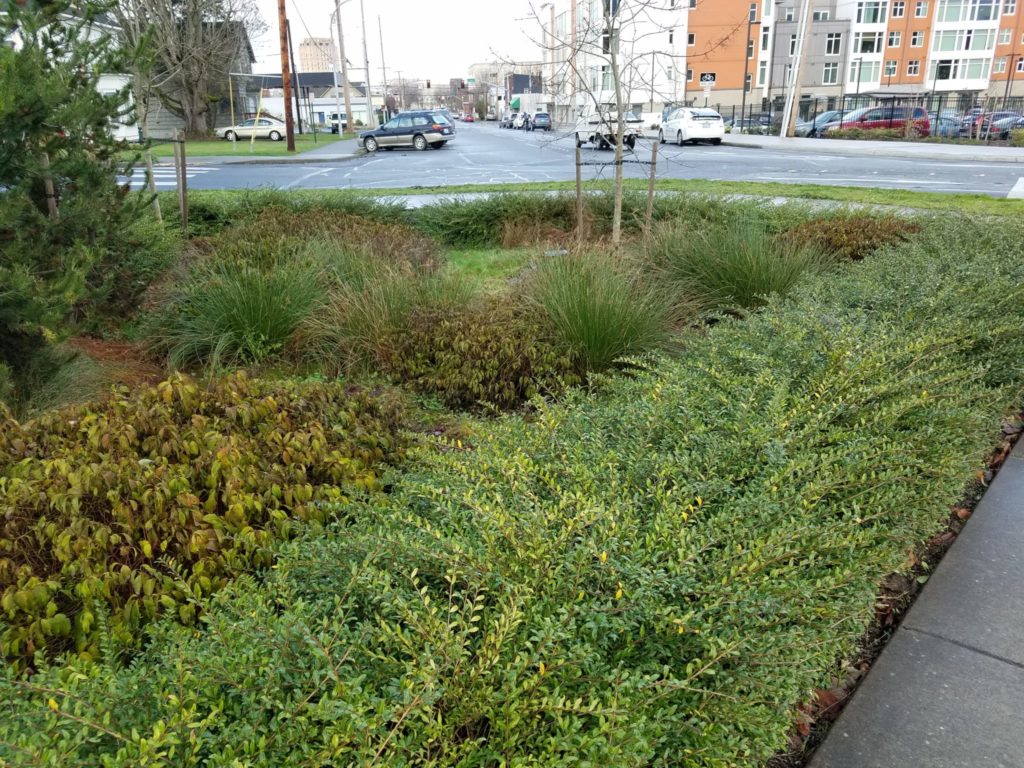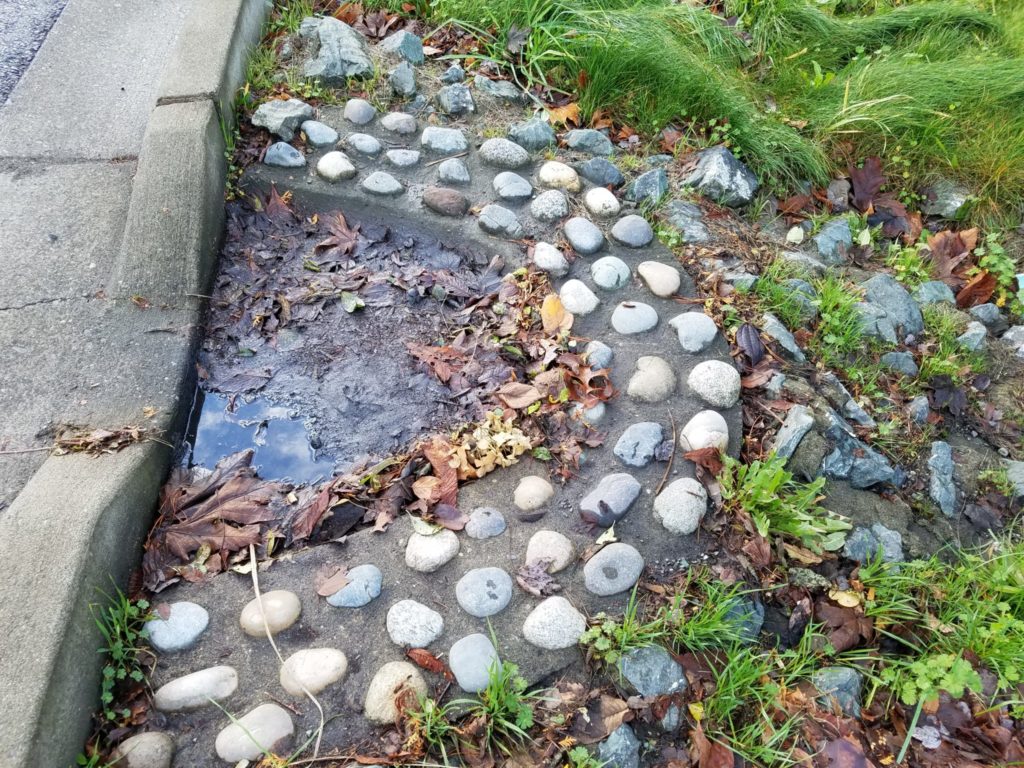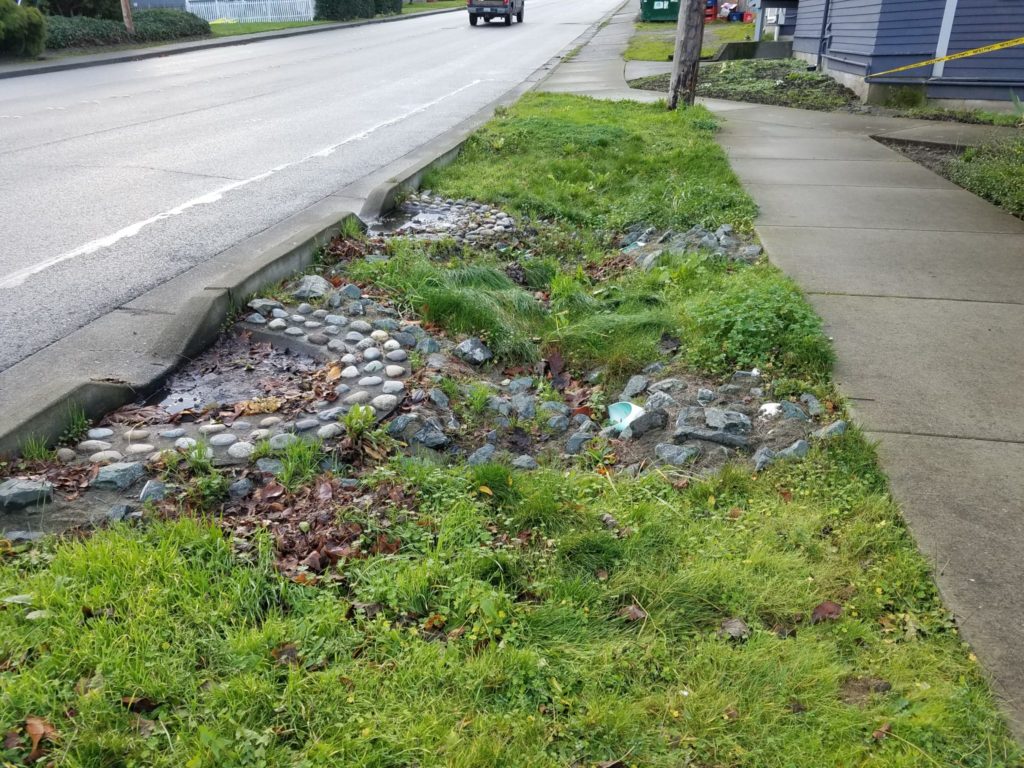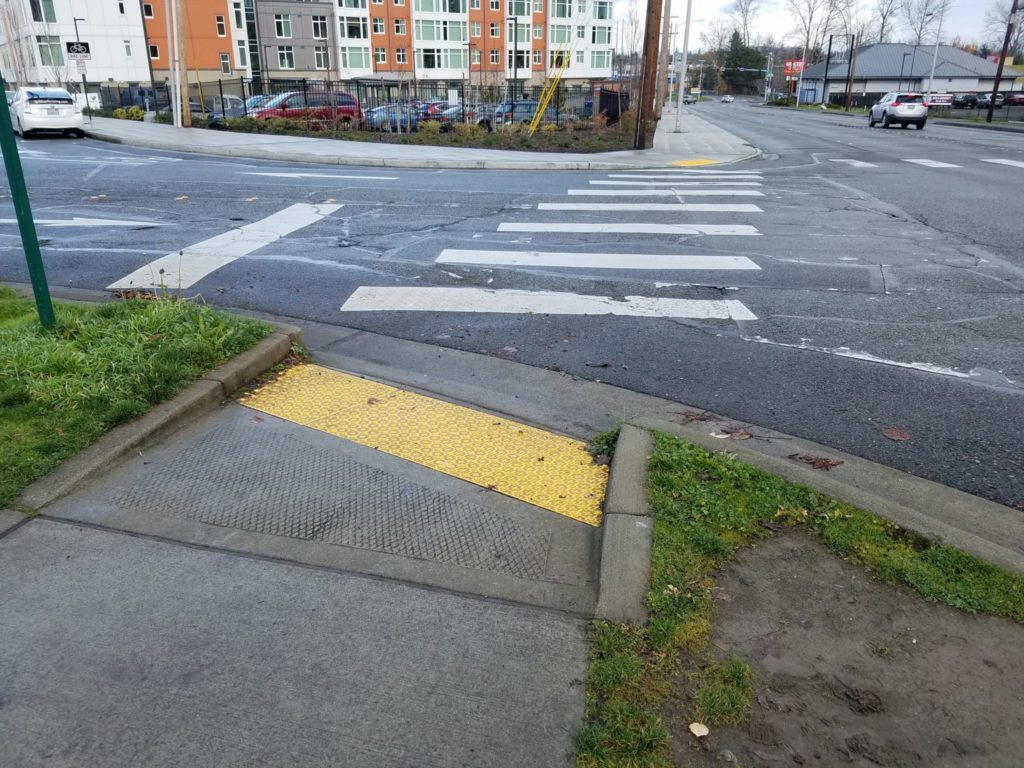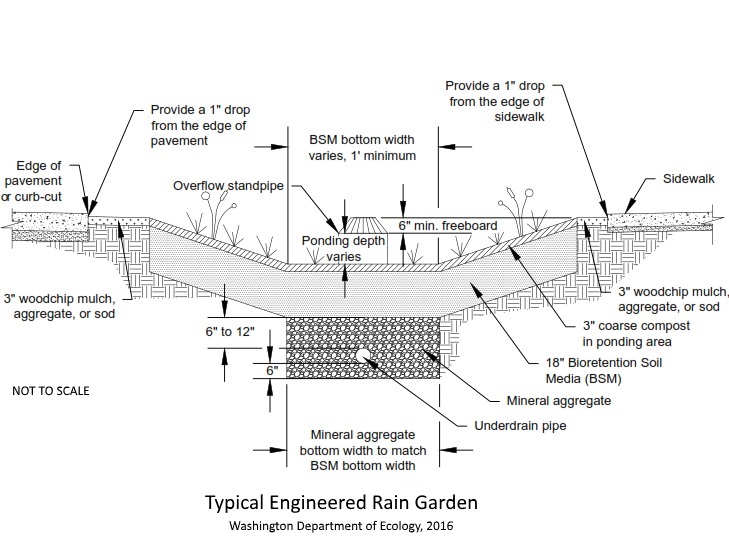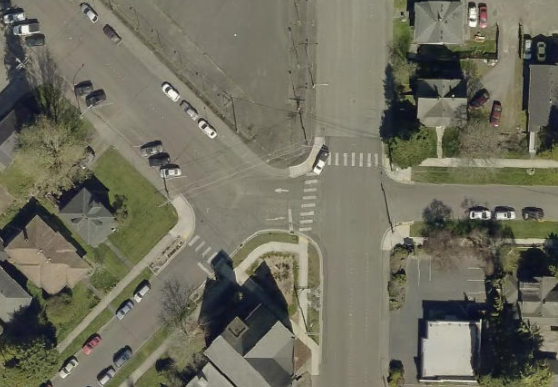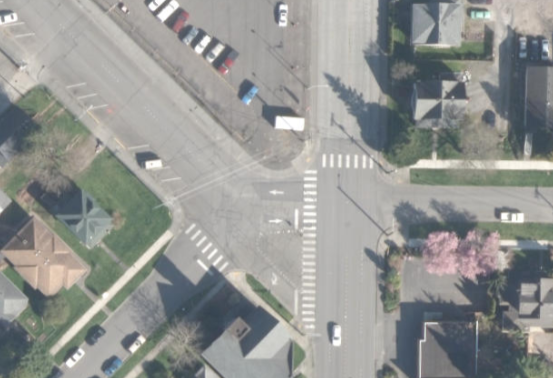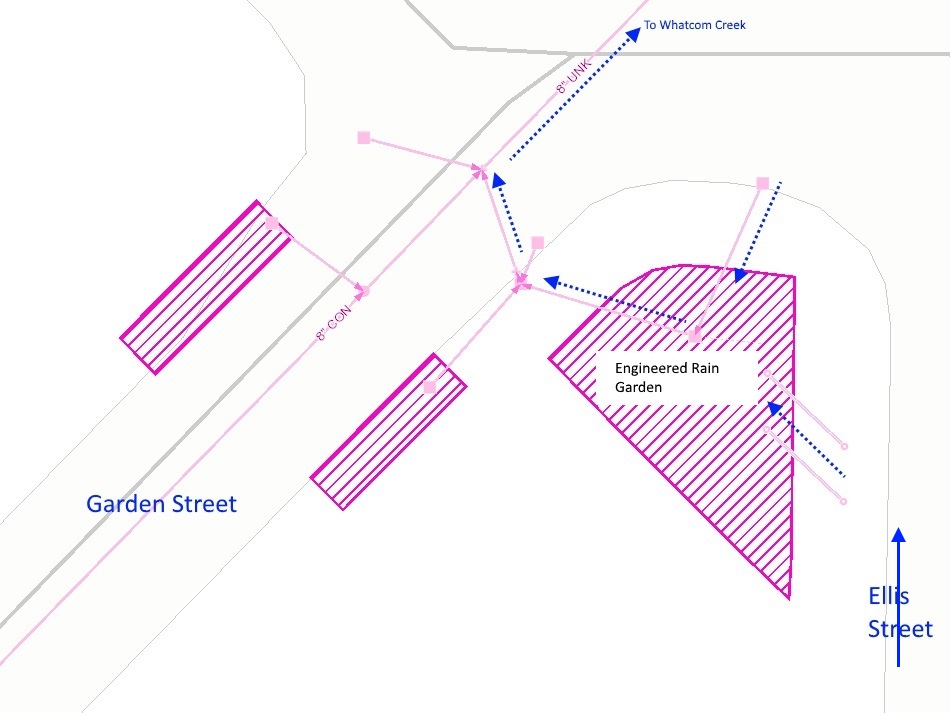Where is this located? It’s at the three-way corner of Ellis, Garden, and Champion Streets.
What’s special about this place? Major pedestrian safety and road improvements at this intersection were combined with stormwater improvements. This is the largest engineered rain garden in downtown. Adjacent to this facility are three other smaller rain gardens – two at the bottom of Garden Street and one at the bottom of Ellis Street – which collect street runoff and then send it to the larger facility.
image gallery
select any photo to see a slideshow
